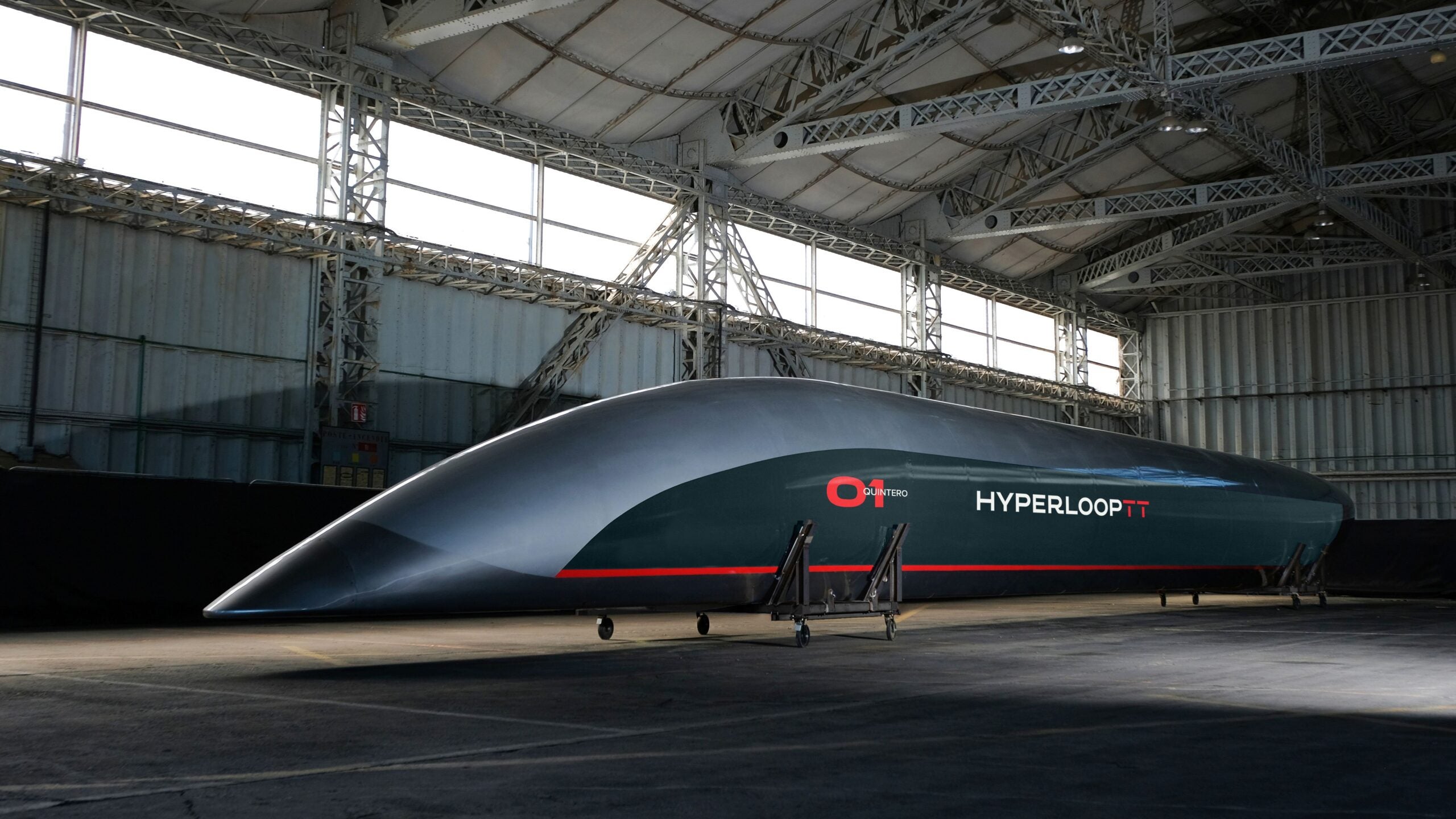
“If you drive a car, a train, an aircraft, a bicycle, your main source of resistance is the air,” Alexandre Zisa, vice-president of programmes at Hyperloop Transport Technologies (HyperloopTT), tells Investment Monitor.
“When you put your hand outside, even at a low speed, you can feel that resistance on the tiny surface of your hand. This is why we are moving things to the tube,” he says, pointing at the massive tube structure looming over us.
Headquartered in the US, HyperloopTT has a research and development centre in Toulouse, France, which Investment Monitor visited during a press trip to the city. On arrival at the site, nestled in Francazal, a former military base, two striking features draw your attention: the futuristic-looking hyperloop capsule and the tube structure that goes over the wide dirt path.
Popularised by Elon Musk in 2012, the concept of the hyperloop, a vacuum tube-based transportation method, originally came about in 1799 thanks to English inventor George Medhurst, and since then different types of pneumatic railway, atmospheric railway or vactrain have been attempted without achieving commercial success.
This particular hyperloop concept has been in development by HyperloopTT since its founding in 2013. The capsule – intended to carry either people or cargo – hovers inside a depressurised tube and is able to reach speeds of up to 1,200km per hour (km/h).
Is the hyperloop all it is hyped up to be?
Currently, high-speed rail systems across the world reach an average speed of about 320km/h. Right now, even though the speed HyperloopTT can reach is 1,200km/h, the company is compromising on 750km/h so that it can be ready rather sooner than later, according to Zisa.
The idea is to then increase the speed incrementally. “Later on, with the maturing of technology, we will be able to push the boundaries,” he says.
He adds that part of the reason behind this compromise on speed comes from creating routes that have turns instead of being completely straight. An example of this different route option was initiated by HyperloopTT in 2018, when the company signed a public-private partnership agreement with the Northeast Ohio Areawide Coordinating Agency to study a Great Lakes Hyperloop corridor.
The study assessed the technical, financial and regulatory viability of the Chicago-Cleveland-Pittsburgh corridor. Zisa explains that drawing a straight line between towns is of course the fastest route, but it is also expensive as you go over villages, rivers and other obstacles that require substantial infrastructure investment.
To avoid this, turns can be introduced in the route, which reduces the average speed and increases the distance but also impacts investment. It comes down to the investor, Zisa adds, and whether “they want to put a little bit more money to reduce the duration, or if they want to limit the investment and increase the duration”.
When it comes to what goes in the capsules, HyperloopTT has two configurations; one optimised for passengers, which is the company’s “main configuration so far”, and another one for cargo transport, according to Zisa. In February 2022, another major hyperloop company, Richard Branson’s Virgin Hyperloop, decided to put an end to the development of its passenger transport solutions to focus solely on freight.
Hyperloop’s rich environmental promise
When it comes to environmental factors, the potential of hyperloop is particularly exciting. The idea is for the HyperloopTT system to create more energy than it utilises by integrating solar panels and other renewable energy sources to create a net energy-positive system. “The calculations show that we are already lower in terms of carbon footprint than a railway,” says Zisa.
Most of the carbon footprint from HyperloopTT systems comes from setting up the infrastructure as the energy required by the capsule to move across the tube is minimal, Zisa adds.
In fact, he says the company would not exist if the hyperloop wasn’t energy efficient as that is one of the main goals of the technology.
Promises are high and the possibilities seem exciting to say the least, but the public will have to wait a little longer before the hyperloop becomes a reality. Zisa says that hopefully it is a matter of “single digits” in terms of years of wait ahead – but he also states that he is optimistic in life.



